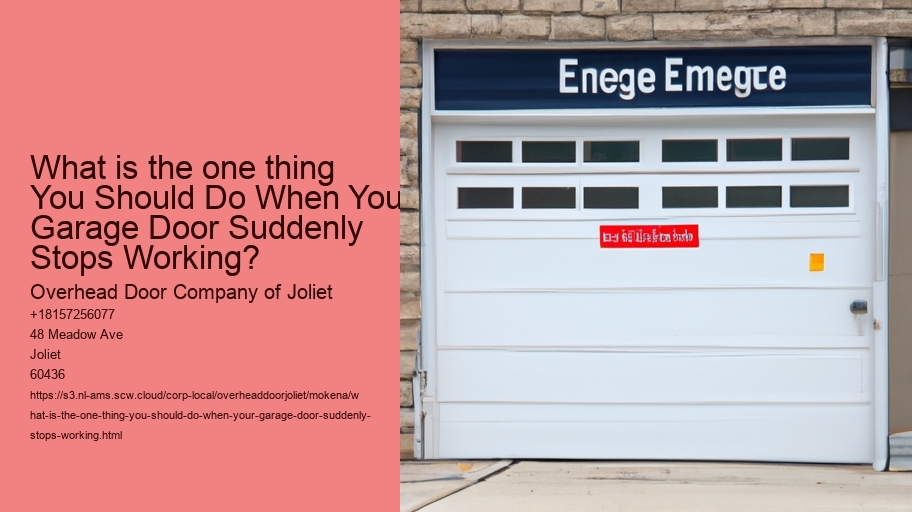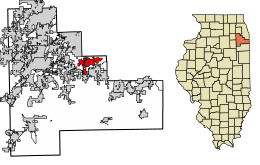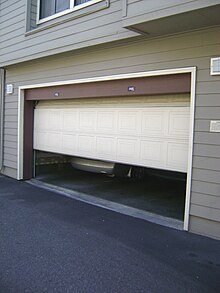Determine the Type of Garage Door and Opener
It is important to know the type of garage opener and door that you are using before you start troubleshooting. Garage door services include everything from installation to repairs local garage door repair in Mokena customer service.
Garage doors typically fall into different types based on their appearance and operation.The most popular doors are roll-up, sectional, and tilt-up doors.Sectional doorways are constructed from panels that are joined by hinges, allowing the door to bend when it closes and opens on vertical track.Roll-up doors, often found in commercial environments made of slats that roll up into a coil.
The tilt-up door on the contrary is a solid single piece that opens by tilting inward and up.Belt drive garage door openers are quieter, however, they employ a rubber band instead of chains. They are a great option for garages with attached garages. Screw-drive garage door openers employ a rod with a threaded steel to move the garage door. This is the ideal balance between cost and noise.
The next step is to inspect the garage door opener and identify the model. Check the plug and breaker to ensure that the opener is running. Examine the manual release cable to make sure it isn't pulled. This will result in the door being removed from the opener. Inspect the tracks and rollers of the door for any damage or obstructions. Clean up any obstructions.
Lubricate moving parts when needed because a lack of lubrication can cause sticking or jamming.If the door is still unable to function, try resetting the opener.This can usually fix electronic glitches or faults.Consult your opener's manual for specific reset instructions, as this procedure can differ among models.Many modern openers have a reset button, whereas others may require unplugging and reconnecting.
In a few cases it could be more complex like a damaged spring or a worn-out motor, which would require professional assistance.Springs are subject to significant tension and are dangerous to repair if you don't have the right tools and expertise.
If your garage door suddenly stops functioning or is not working, it's best to consult an expert.
Examine for debris or obstructions.
If the garage door abruptly stops functioning, it can be both perplexing and frustrating, especially if it's a regular part of your life.
One of the most important and most effective steps to do when confronted with this problem is to search for any obstructions or debris.This simple yet effective action can often be the key in identifying the issue and restoring functionality to the garage door.Garage doors are based on a system that includes rollers, tracks and other moving parts that have to be clear of any obstructions in order to operate smoothly.Over time, dirt, leaves, small stones, or other debris could accumulate on the tracks or become trapped in the rollers.Even small obstacles could cause the door to stop opening or closing properly.Therefore it is imperative to conduct a thorough examination of these parts should be the first thing you do.
Start by inspecting the tracks, both on the left and right sides of the door.
What is the one thing You Should Do When Your Garage Door Suddenly Stops Working? - wear and tear
- Latter Day Saint movement
- census
- wall
In the next step, examine the rollers as well as hinges.These parts should move freely without resistance.If they're squeaky or stuck, it might be a sign of accumulated grime or rust.In these instances cleaning them and lubricating them will often solve the issue.Use a soft cloth or brush to clean any dirt, and apply a suitable oil to make sure that the parts move smoothly.
It's also crucial to examine the area surrounding the door itself.Sometimes items that are stored in garages can fall or shift, blocking the way of the door.Ensure that the area is clear and that nothing is blocking the door's movement.
Make sure the sensors are working if the door won't open after removing any obstructions.
The sensors of modern garage doors may fail in the event that they're dirty or if they are not aligned correctly.If you are confronted with a garage door that suddenly isn't working, looking for obstructions or debris is an logical and frequently useful first step.It will require only a few tools and expertise, yet it can save you time, money, and also the hassle of calling a professional to fix what may be a quick fix.By making sure you have a clear pathway and
Check the wall switch and remote control
It is important to verify the wall switch as well as the remote control.
These components are typically the reason for an unresponsive garage door, and making sure they are checked can save you time and possibly avoid unnecessary costs.First, consider the remote control.This handheld device is your primary tool for operating the garage door without direct physical interaction.Over time, remote controls can experience issues such as drained batteries, signal interference, or even internal damage.Start by replacing the batteries with new ones.It might seem simple, but dead batteries are a common reason for a garage door not responding.If the problem persists after replacing the batteries, try reprogramming the remote according to the manufacturer's instructions.Additionally, ensure that the remote is within the recommended range and that there are no obstructions blocking the signal.
Next, you should pay attention towards the wall switch. It is also a important component of the garage door's design.
If you feel comfortable, open the switch panel to inspect whether the wires are damaged or disconnected.The wall switch or the remote control is working, but the door is still not responding. This could be a sign of that there is a problem with the garage opener or with other components, like sensors or door tracks.
You can eliminate these issues before you move on to more intricate troubleshooting.To conclude, checking the remote control and wall switch whenever your garage door suddenly stops functioning is a straightforward and efficient approach.By taking a look at these components first, you'll be able to determine whether the problem lies in these parts that are easily accessible or if additional investigation is needed.This initial inspection will not only help you save time, but also gives you assurance that you've taken the steps necessary to pinpoint the issue in a timely manner.
Make sure the door is balanced manually
If your garage door suddenly stops working, it can be both difficult and inconvenient.The garage door is a vital part of your home, providing security, protection from the elements, and a simple access to your vehicle and storage area.
Manually testing the balance of the garage door could be an important step if your door is malfunctioning. This simple, yet effective method will assist you in identifying any possible issues and avoid the possibility of further damage. Balance of the garage door is vital to its safe operation.
What is the one thing You Should Do When Your Garage Door Suddenly Stops Working? - Orland
- Orland
- cogwheel
- wear and tear
To test manually the door's balance, you must first disconnect the garage door opener.
Most garage doors are equipped with a release system that is found on the red cord or handle. Once the door is disconnected from the motor, lift it up to waist height and release it. A well-balanced door will remain in place and move slowly.It is recommended that you contact an expert to assist you adjust the springs to ensure that your garage door is correctly balanced. This will not only fix the issue but will also extend the longevity and durability of your door.
In the end, testing manually the door's balance is an essential first step when your garage door suddenly stops functioning.
This method helps identify whether the problem lies in the balance of the door or elsewhere in the system.By being aware of the importance of balance for your door and addressing any issues promptly, you can prevent future damage and ensure that your garage door functions efficiently and safely for many years to in the future.Examine the Tracks and Rollers
If you are confronted by a garage door that has suddenly stopped to function, your first response is to worry or consider the most complex technical issues.However it is often the answer lies in a quick inspection of the tracks and rollers.This essential check will reduce time and costly repairs making it the primary that you must prioritize when your garage door stops working.
The tracks and rollers in the garage's operating system are critical. The tracks comprise the metal rails that control the door when it opens. The rollers move along the tracks.
These parts are prone to get dirty, wear out or misaligned over time. This can cause issues with operation.Begin by examining the track for any obstructions. Dust, grime and even tiny particles can accumulate, causing rollers to struggle to move along the path. Cleaning the tracks using a wet cloth can resolve the issue.
The next step is to check the alignment of the tracks.Tracks must be straight and parallel to one other.If they appear bent or out of alignment, the door can jam.You can gently tap the misaligned portions back into position using the help of a rubber mallet.However in the event that the damage is significant, it is advisable to contact a professional to re-align the tracks in a way that is safe and functionality.
It is also important.Over time, they can wear out or become damaged particularly if made from plastic.
Metal rollers with bearings are more durable and offer an easier operation.Furthermore, lubrication is a essential role in maintaining the smooth motion of the tracks and rollers.Applying a silicone-based lubricant can reduce friction and prevent wear.Make sure to grease the moving parts, such as the hinges and springs, to make sure that your garage door functions efficiently.
When you make sure that the components are in good alignment and properly lubricated it is possible to restore the garage door's fully functioning.
Making the effort to periodically check and maintain these components will also help to prevent problems in the future, and prolong the lifespan of your garage door system.Look for obvious damage or wear
It can be frustrating and annoying when a garage door stops completely, especially when you're heading home, or trying to lock the home to sleep.
Garage doors are a complicated device made of multiple components, including springs, cables, rollers, and tracks every one of which plays a crucial role in its seamless operation.Over time, these parts can experience wear and tear due to regular use and exposure to environmental factors.
When you conduct a thorough inspection, you can identify any obvious indications of damage that could be creating problems for the door.Begin by examining the springs. They are responsible for lifting and lowering the door. Look for evidence of wear or rust. A broken or worn spring could make the door unusable, which is why it is essential to address this issue as soon as possible. The next step is to check the cables for signs of fraying or broken wires.
Another important area to pay attention to is the door itself.Look for damage, bends, or warpings that could affect its balance or alignment.Pay careful attention to the weather stripping at the lower part of the door, as a damaged strip can hinder the door from sealing properly.
Also, make sure that the sensors of the door are in good condition and aligned as misalignment or dirt may interfere with their functions and cause the door to stop working.A visual inspection can be beneficial however, it's crucial to be aware that not all issues are instantly apparent. If you don't see any obvious indications of wear or damage you may need to consult an expert to identify the issue.
In conclusion, when you are faced with a non-operational garage door, looking for visible damage or wear is the first step.This approach is not just helpful to identify the issue fast but also empowers you to make the appropriate action to bring the door back to its original condition.
You can extend the lifespan of your garage door simply by taking proactive steps.Make sure to check for Springs and Cables
When your garage door suddenly stops functioning it could be annoying as well as inconvenient.One of the most essential actions you can take when faced with this issue is to check the springs as well as cables.These components are integral to the functionality of your garage door, and problems with them are usually the culprits behind a broken door.
The springs play an essential part in the functioning and smoothness of your garage through counterbalancing the weight. There are two main types of springs: extensions and torsion. Torsion springs mount above the garage and twist to conserve energy. Extension springs on the other hand they are mounted on either side of door and are stretched to give the necessary force.
As time passes, these springs can be damaged, worn out, or lose tension, which can lead to operational issues.Similarly, cables are essential because they work with the springs to lift and lower the door.They are typically made of steel and designed to withstand substantial tension.However, they can suffer from wear and tear, fray or snap because of the immense pressure they are under.A broken cable could result in the door becoming unbalanced, or completely inoperative.
If you are unsure whether the cables or springs require to be adjusted, take a look and examine them. Find indications of wear or rust.
It is essential to be safe while dealing with garage door parts.
The cables and springs are in tension and could cause serious injuries. If you do not have the necessary experience for garage door repair, it is recommended to contact a professional. They will have the equipment and know-how necessary to fix or replace these parts.What is the one thing You Should Do When Your Garage Door Suddenly Stops Working? - cogwheel
- automobile repair shop
- finance
- log cabin
In conclusion, when your garage door suddenly stops working, assessing the springs and cables is a key step in diagnosing the problem.Understanding their role and potential issues can help you determine whether a simple adjustment is needed or if professional intervention is required.Taking prompt action not only restores functionality but also ensures the safety and longevity of your garage door system.
You might want to consider calling a professional technician
The garage door could suddenly stop working, causing you to waste time. It may even expose your home to danger.
While it might be tempting to pull out the tools and attempt doing it yourself but the best course of action is to call a professional technician.This decision will not only guarantee your safety but also promises a more effective and lasting solution to the problem.Garage doors are complex systems composed of various components such as springs, cables, tracks, and electronic parts.Each of these elements plays a crucial role in the door's operation, and a malfunction in any part can cause the entire system to fail.Without proper knowledge and experience, attempting to fix these issues can be dangerous.For instance, garage door springs are under high tension and can cause severe injury if handled improperly.Professional technicians are trained to deal with these risks safely, using the right tools and techniques to handle repairs.
In addition, a technician who is a professional has experience and expertise that an average person does not possess.
They can quickly diagnose the issue and identify whether it's a minor problem, like a misaligned track, or something more serious, like a broken spring.This expertise not only saves you time but also prevents the potential for further damage that can occur with incorrect handling.Professionals also have access to high-quality parts and can ensure that replacements match the specifications of your existing garage door system, leading to better functionality and longevity.In addition, hiring a professional can save you money in the long run.While DIY is a good option, while a DIY approach might seem cheaper initially, the likelihood of errors is very high, and could result in greater and more expensive repairs in the future.A professional technician will get the job done right the first time which reduces the possibility of issues recurring.
A lot of technicians offer warranties on their work that gives you peace of mind knowing that in case something goes wrong, you are covered.A professional could save you a lot of time and hassle.Trying to grasp the complexities of garage door mechanics, acquire the proper tools, and carry out the repair could be time-consuming and take days.In the opposite, a technician is able to fix the problem quickly, and allow you to go back to normal without unneeded delays.
In the end, even though the desire to fix your garage door yourself may be strong, calling an expert technician is the safest effective, efficient, and in the end, the best option.Their know-how, access to quality parts, and the ability to make quick and precise repair work will make sure that your garage door is back and running at a high level and will protect your home as well as your family.


















